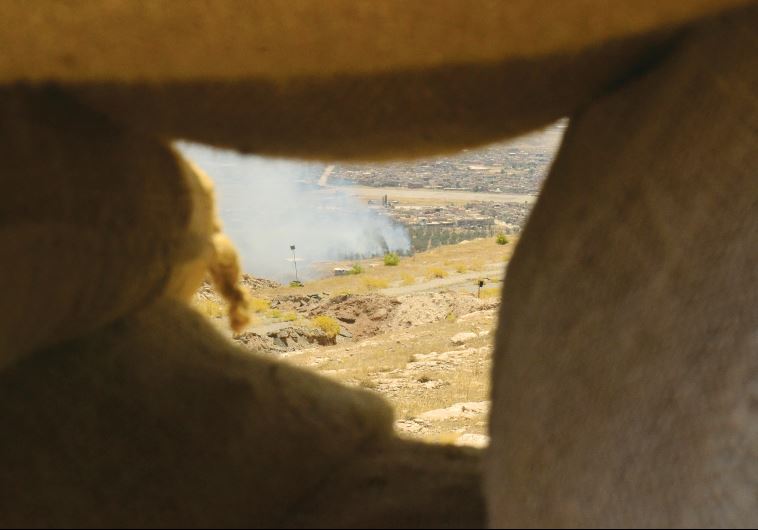The routine of war: 24 hours on the front line against ISIS
It’s World War I trench-style warfare and the Peshmerga are defending a 1,000 kilometer front line.
 An explotion is seen on territory controlled by Islamic State, fired by Kurdish Peshmerga fighters in Bashiq(photo credit: LAURA KELLY)
An explotion is seen on territory controlled by Islamic State, fired by Kurdish Peshmerga fighters in Bashiq(photo credit: LAURA KELLY)